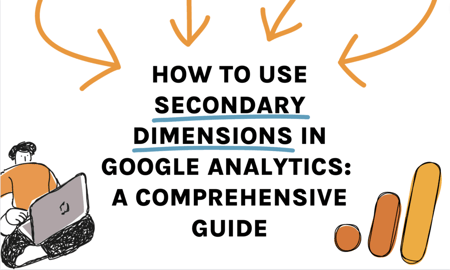Transform Your Data Comprehending With Second Measurements
Checking out data through the lens of second measurements opens up a realm of untapped insights, supplying an extra nuanced point of view on the ins and outs of your dataset. By unwinding the layers underneath the surface metrics, you can uncover patterns and partnerships that might have otherwise gone undetected, leading the way for informed decision-making and critical optimizations. This tactical utilization of second dimensions not just enriches your information understanding but additionally acts as a stimulant for opening the full potential of your analytics undertakings.
Benefits of Secondary Measurements

Additional measurements additionally enable services to perform even more in-depth efficiency analyses. By layering added measurements onto existing information, organizations can analyze the effect of different variables on vital metrics, helping them make more informed decisions. Secondary dimensions facilitate the identification of brand-new possibilities for optimization and development by revealing partnerships that may have otherwise gone unnoticed. In general, the usage of additional dimensions results in much more durable and informative data evaluation, encouraging organizations to drive calculated activities based on a deeper understanding of their information.

Just How to Execute Additional Dimensions
To properly apply second measurements in information analysis, companies should first determine essential variables that line up with their logical objectives and objectives. It is essential to think about how these second measurements will give additional context and deepness to the main data being analyzed.

Analyzing Data With Secondary Measurements
Using additional measurements in information evaluation improves the depth and context of understandings obtained from main data. By integrating additional dimensions into your evaluation, you can get a much more detailed understanding of the relationships and patterns within your information. This process entails analyzing the key data via different lenses or point of views, which can reveal covert connections or patterns that might not be quickly evident when evaluating the data making use of only key dimensions.
Analyzing information with additional dimensions permits you to segment and team your data in various ways, supplying a more nuanced sight of your dataset. secondary dimensions. This segmentation can aid you identify details aspects that may be affecting the outcomes you are researching. By drilling down into the information utilizing second dimensions, you can reveal important understandings that can assist decision-making and strategy advancement
Ideal Practices for Secondary Measurements
When including secondary dimensions into information analysis, precision in specifying the measurements is crucial for drawing out purposeful understandings. It is crucial to choose second dimensions that match the primary data successfully.
Another finest method is to prevent redundancy in dimensions. Guarantee that the secondary dimensions add new point of views or details to the analysis, instead of duplicating details currently existing in the main dimensions. This will help avoid confusion and improve the interpretation of the data.
Furthermore, it is essential to consider the scalability of the analysis when picking additional measurements. Pick measurements that can be quickly broadened or adjusted as required to suit future information demands or adjustments in logical focus. By following these ideal techniques, experts can optimize the worth of additional dimensions in information evaluation and gain deeper insights right into their datasets.
Taking Full Advantage Of Insights Via Secondary Dimensions
Incorporating secondary measurements strategically boosts information analysis by giving a much deeper understanding of the relationships within the dataset (secondary dimensions). By maximizing understandings with secondary measurements, analysts look these up can reveal useful patterns, trends, and dependences that may not be immediately apparent when taking a look at the data via primary measurements alone
One key benefit of utilizing second dimensions is the capacity to segment and filter data more exactly. This division permits an extra granular analysis of particular subsets within the dataset, making it possible for analysts to determine correlations and causations that may have or else been neglected.
Moreover, additional measurements can help in contextualizing main data factors by including layers of information that use an even more comprehensive view of the information. This contextualization is important for making informed decisions based on an all natural understanding of the dataset.
Conclusion
In final thought, including secondary dimensions in information evaluation official website procedures offers a much more thorough and nuanced understanding of information, causing boosted insights and tactical decision-making. By integrating extra variables that straighten with logical objectives, concealed patterns and connections can be disclosed, giving a more detailed and contextualized view of data. This technique takes full advantage of the possibility for optimization and reveals brand-new possibilities within procedures.
In general, the use of second measurements leads to extra durable and insightful information analysis, equipping businesses to drive strategic actions based on a deeper understanding of their information.
Making use of additional measurements in data evaluation improves the deepness and context of understandings obtained from primary information.Assessing information with additional dimensions more tips here enables you to section and group your data in different methods, giving a much more nuanced sight of your dataset.When integrating secondary measurements right into data analysis, accuracy in specifying the dimensions is important for drawing out purposeful insights. Ensure that the second measurements add brand-new point of views or details to the evaluation, rather than duplicating details currently present in the key dimensions.